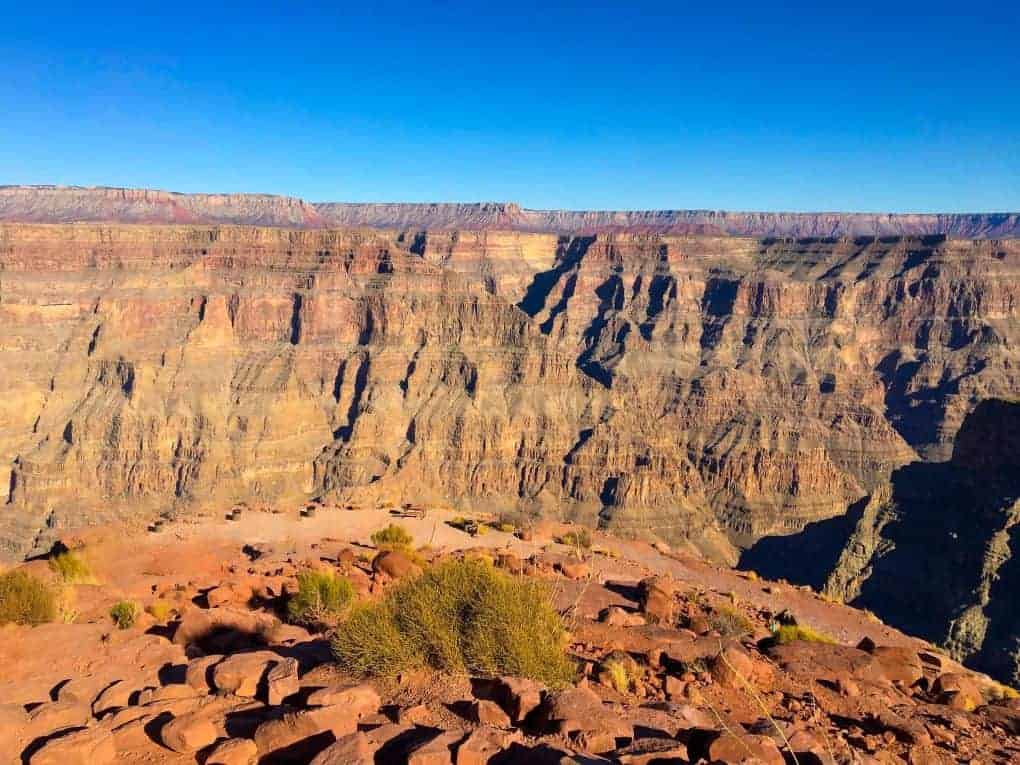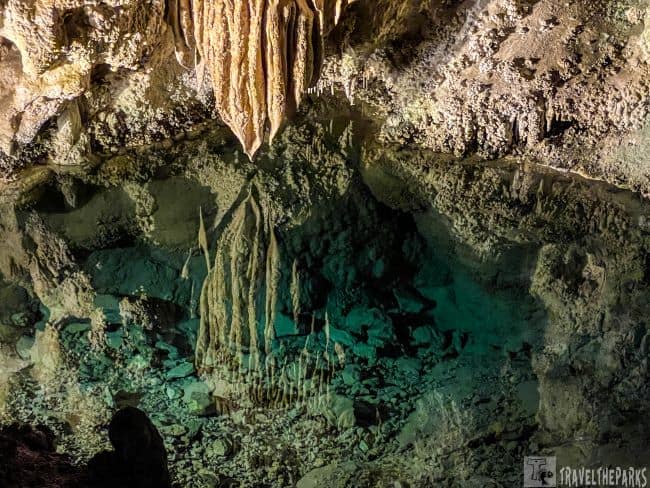An expedition to White Sands National Park is an unforgettable experience. In southern New Mexico, a journey to this esteemed park treats visitors to brilliant white gypsum dunes. We included this rare gem as part of our Texas/New Mexico road trip Pleasantly surprising for us was how enticing the white sand dunes were. There are over 275 square miles of gypsum dunes in this field, the largest in the world. In the White Sands National Park, shimmering gypsum dunes await exploration. So, let’s dive into our captivating tale of White Sands, a place that’s not just another point on the map.
This post may contain affiliate links, meaning if you purchase something through one of these links, we may earn a small commission at no extra cost to you! Read the full disclosure policy here.
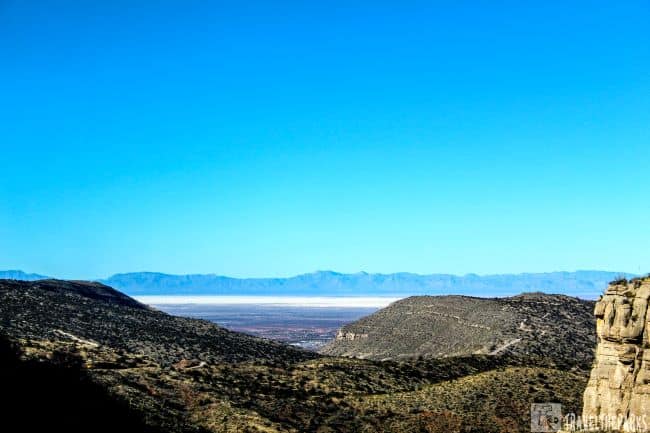
Table of Contents
Where is White Sand National Park? How to Get there?
- The most convenient way to get to White Sands National Park is by car. The park is located off US Highway 70, about 15 miles southwest of Alamogordo and 52 miles northeast of Las Cruces. This park is also about 85 miles north of El Paso, Texas.
- The closest airport to White Sands National Park is the Alamogordo-White Sands Regional Airport (ALM), 13 miles from the park. However, this airport has limited commercial flights, and most visitors will fly into the El Paso International Airport (ELP), which is about 85 miles from the park.
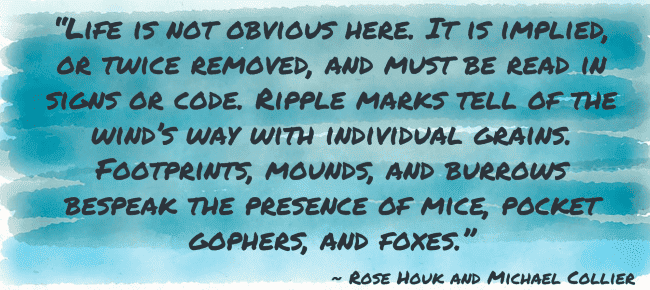
What to Know Before You Go: Travel guide for White Sands National Park
The park offers a variety of ranger-led programs, including guided hikes, talks, and stargazing programs. These programs offer a unique insight into the natural and cultural history of the park.
- Operating hours: Open daily, 7 AM–9 PM (gates close at 9 PM but varies seasonally). Closed on Christmas Day. Check current hours before your visit, especially during holidays. Check the NPS website for real-time alerts on closures or weather!
- Entry fee: $25 per vehicle (valid 7 days). Consider getting the America the Beautiful National Park Annual Pass for $80. It’s your golden ticket to free entry at over 2,000 federal spots across the U.S., covering all 62+ National Park Units.
- Full moon hikes: Offered seasonally—book in advance (a magical way to experience the dunes!).
- Best seasons: October–April for mild weather; Summers are extremely hot, often exceeding 100°F (38°C) — bring plenty of water! Winter nights can be chilly, so pack layers if staying after sunset. Sudden afternoon thunderstorms are possible during monsoon season.
- Pet Policy: Leashed pets allowed: On trails and picnic areas (6-foot leash). Restrictions: No pets in buildings or on backcountry camping routes. Paw protection: Sand can burn paws in summer—test ground temps first.
- Cell Service & Connectivity: Limited signal: Spotty coverage in the park; download maps/guides offline.
- What to Bring Essentials:Water (1 gallon per person—no water stations on trails). Sunglasses/sunscreen: The white sand reflects UV rays intensely. Closed-toe shoes: protect feet from hot sand and prickly plants.
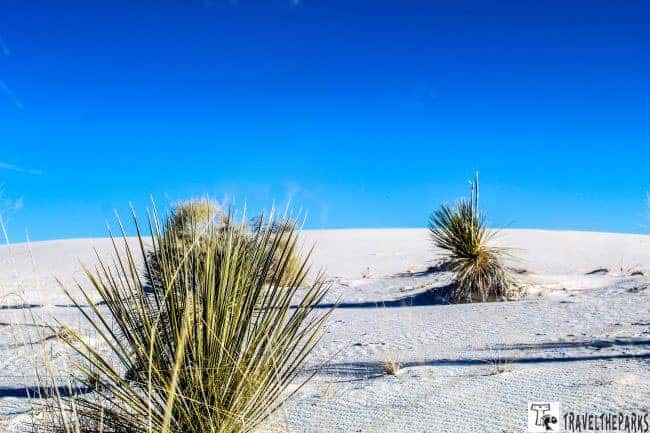
White Sands National Park: Explore a Bucket-List Destination of Surreal Beauty
The gypsum dunes of White Sands have been around for ages. They formed when a vast sea that used to cover the area dried up and left gypsum behind. With a mix of geological activity pushing the deposits up and some help from wind and water erosion, these extraordinary dunes we see now came to be.

Native American people have been hanging out in the region for thousands of years, making the most of it for hunting, gathering, and their spiritual rituals. Then in the 16th century, Spanish explorers like Francisco Vásquez de Coronado showed up, chasing after legendary cities of gold. Fast forward to the 1940s, White Sands turned into a hotspot for military stuff. The White Sands Proving Ground kicked off in 1945, turning into a major spot for testing military weapons and gear, not to mention it’s where they worked on the atomic bomb. The spot where they set off the first atomic bomb in 1945, the Trinity Site, is right within the park.
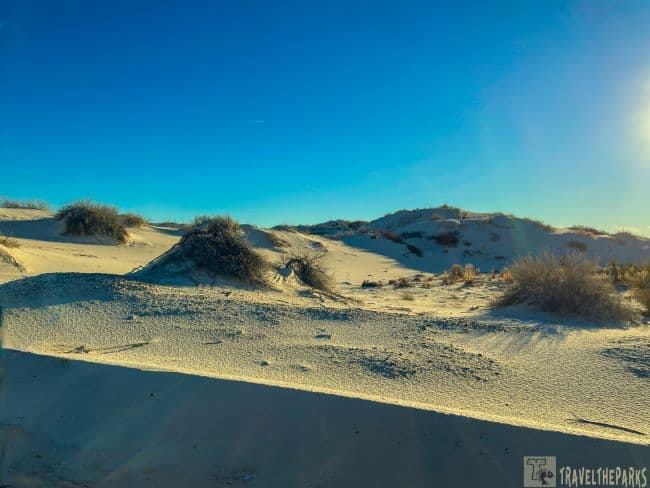
On January 18, 1933, President Hoover created White Sands National Monument to preserve “the white sands and additional features of scenic, scientific, and educational interest.” On December 20, 2019, they re-designated the monument as White Sands National Park. They added this recognition because of the significance of the park’s natural and cultural resources. The redesignation made White Sands National Park the 62nd national park in the National Park System.

Our Adventure Begins: At this Most Unique National Park
As the sun cracks over the horizon, it painted the New Mexico desert in fiery hues of orange and pink. The temperature is cold. We snuggle deeper under the blankets, waiting for the travel trailer to warm. Coffee brews, the aroma mingling with the fresh desert air. Today is a crisp 23 degrees, so we are savoring the last moments of warmth before the day’s adventure unfolds. We pack our essentials – sunscreen, water, and a sense of childlike wonder – and hop into the truck. Leaving our campsite at Oliver Lee Memorial State Park, the rugged desert terrain characterized by rocky hillsides, sparse vegetation, and towering mesas slowly transforms as we head towards White Sands National Park.
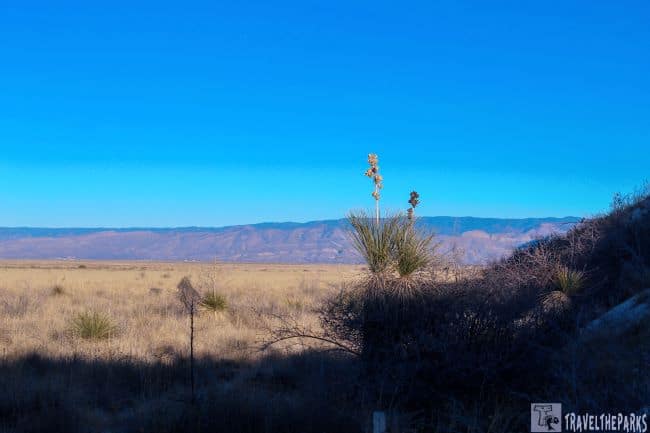
It is a journey of discovery as we drive towards the dunes. The world transforms from scrubby vegetation to an otherworldly landscape of pure white. It’s like stepping onto the moon, or into a snow globe. Someone shook a little too enthusiastically.
Important Note: The park may occasionally close because of missile testing at nearby White Sands Missile Range. Be sure to check the park’s website for closures and schedule changes before you go.
What are the Best Things to See & Do in White Sands National Park?
There is something for everyone at White Sands National Park, whether you are looking for adventure, relaxation, or a connection with nature.

Planning Your Adventure Begin at the Visitor Center
Your first stop should be the White Sands Visitor Center. The visitor center and gift shop are open 364 days a year, closing only on Christmas Day. Visitor center hours are from 9:00 am to 5:00 pm. They built the historic building in 1936. At the Visitor Center, the exhibits step into the past. Here we discover the fascinating history of White Sands National Park. The displays detail the formation of the dunes, the park’s special ecology, and the human stories intertwined with this desert oasis. There is a 17-minute park film playing every 30 minutes. The front desk has friendly rangers ready to answer your questions, recommend trails, help to guide you toward an unforgettable experience.

In addition to containing the world’s largest gypsum dune field, the park is also home to the world’s largest collection of Ice-Age fossilized footprints that tell the story of more than 20,000 years of human presence at White Sands. I found this to be one of the most mesmerizing display detailing the cast of these ancient human footprints.

Exploring the Glistening dunes
We park the car and step onto the firm, cool sand, shoes in hand. The first thing we notice is the incredible softness of the sand between our toes. We laugh, gazing out at the stark white sand contrasted against the brilliant blue sky. Today, it creates a mesmerizing visual spectacle. The sand dunes at White Sands National Park are in constant transformation. The sand usually feels soft under your feet, however, as stronger winds push the grains more quickly, a harder surface is exposed.

The firmer surface underfoot is simply the more moisture saturated parts of the dunes. Gypsum will soak up moisture, creating a saturated hard-packed core of the dune. The top surface of this exposed harder surface will eventually dry out and soften as it loses moisture, once again becoming a wispy, soft sand where footsteps can be left, and memories taken home. The park’s white sand reflects the sun’s rays, so it’s important to wear sun protection, including a hat, sunglasses, and sunscreen.

White Sands National Park Scenic Drive: A Glimpse of Enchantment
Before we arrived at the park, I downloaded the NPS app so we could use the virtual guide and audio tour. This 8-mile scenic drive begins at the Visitor Center. Passing through the dune field, before ending at Alkali Flat trailhead. The paved section of Dunes Drive spans approximately five miles, while the hard-packed gypsum sand section covers three miles. Along the roadway, there are numerous pullouts to stop and explore.
Note: It is important to use the pullouts and not stop in the roadway. Be aware of pedestrians on the roadway.
The park is in the desert, so it’s important to bring plenty of water and stay hydrated, especially if you’re visiting during the summer months. The entire route is takes 45 minutes to complete but for us it was twice as long since we did some of the trails.
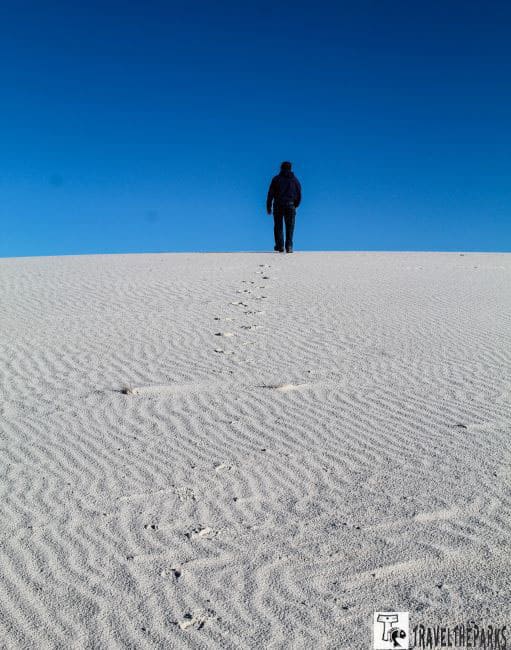
A Journey Through the Dunes: Hiking the Alkali Flat Trail at White Sands National Park
The Alkali Flat Trail is a 4.4-mile loop trail. The red diamond post markers are easy to spot, marking a path through a sea of white dunes sculpted by ancient winds. These towering dunes rise on either side and as we crest the top, in the distance, we could see the jagged teeth of the Sacramento Mountains. A stark contrast to the rolling white waves of gypsum we are trudging through. We pass the occasional yucca, a spiky sentinel, standing guard against the sun’s harsh glare. The sand is easy to traverse today as recent rains have made the dunes hard packed. Still, the climb, at times, left us breathless. You sure get a workout on this trail?
PRO Tip: White Sands National Park is dog-friendly! Your furry companions are welcome to join you on most of the park’s adventures. Hiking trails welcome well-behaved dogs on leash. Pack out all waste and respect the beauty of the park for future visitors, both human and canine.

Lost in the White: A Barefoot Adventure on White Sands’ Serene Trails
Dune Life Nature Trail is a short self-guided 1.0-mile loop trail. Super easy for every skill level, especially kids. Informative placards guide you through the flora and fauna of the park. The trail takes you up and over several otherworldly gypsum dunes. We learn that the dunes play an integral part in this park. The dunes are home to a surprising variety of plants and animals, including lizards, snakes, rabbits, and even the occasional coyote. Surprisingly, many have adapted to the gypsum camouflaging themselves white. There are restrooms and a picnic area near the trailhead.

A Walk Among the Dunes: The Interdune Boardwalk Experience
Interdune Walk is a 0.4-mile out-and-back trail. The raised boardwalk is an easy walk. It’s perfect for a quick look at dunes. If you only have time for one trial, this is it. What I found most interesting was the interpretive sign that explained how the dunes impact coloration. The coloration of species in White Sands National Park is influenced by the presence of white gypsum dunes. Animals, such as the Apache pocket mouse or the bleached earless lizard, have adapted to blend in with the dune environment. This adaptation provides them with camouflage from predators, giving them an advantage for survival.

The Playa Trail is a lovely 0.4 mile hike great for stretching your legs. For us, one highlight of this trail is reaching the playa itself. Playas are shallow depressions in the landscape that can fill with water after rainfall, forming temporary pools. The playa is dry on our visit. When we are hiking, we always keep our eyes open for wildlife. It’s fascinating how, despite the harsh desert conditions, there is a surprising variety of plants and animals that call the dunes home. Today we encountered yuccas and creosote bushes and even glimpsed a roadrunner. There is always something fascinating to see along the trail!
PRO Tips for hiking: Wear comfortable shoes and clothing that you don’t mind getting dirty. Bring plenty of water, sunscreen and a hat, as there is no shade on the trails. Be aware of your surroundings and watch out for snakes and other wildlife. Leave no trace! Pack out all of your trash and respect the natural beauty of the dunes.
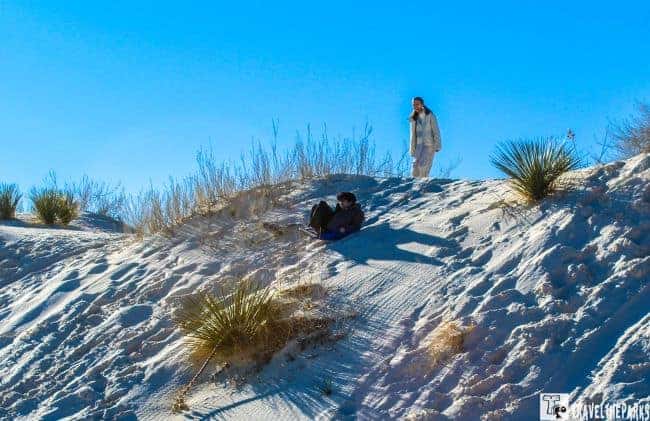
Can I Use a Snowboard or Snow Sled to Sandboard or Sled at White Sands National Park?
It was here we saw lots of kids. Kids naturally gravitate towards these huge dunes. For them, it’s a playground where they love climbing, sliding, and running around in the sand. Although the sand here is not as great for sledding as that at Great Sand Dunes National Park, it is still a thrill for kids. Sleds are available for rent at local stores and the visitor center. If you want to sled down the dunes, you can rent sleds at the park’s gift shop or bring your own. The park also allows sandboarding, but you’ll have to supply your own sandboards. While sledding is the more traditional methods, sandboarding, much like snowboarding, requires more skill.
PRO Tip: You can rent sleds at the visitor center. Walmart and other stores in Alamogordo are far cheaper. Dune conditions: Gypsum sand is cooler than typical sand, but sledding is best after rain (firmer slopes).

Lake Lucero: The Hidden Gem of White Sands National Park
This three-hour ranger-guided tour takes you to the playa (dry lakebed) of Lake Lucero, a rare and beautiful natural phenomenon.. It’s offered once a month from November through March, usually on a Saturday. Reservations are required. Be prepared for a moderate hike of about 1.5 miles round trip on uneven terrain. The Lake Lucero tour begins 25 miles southwest of the park at the Small Missile Range Gate, on Hwy 70 West between mile markers 174 and 175. They charged a special use fee for the tour: $8.00 per person, ages 16 and older, $4 for children. Federal recreation passes do not apply for this special tour. Tickets are required for this program and must be purchased through Recreation.gov or by calling (1-877-444-6777).
NOTE: The taking of pictures and/or video recordings of any kind is prohibited on White Sands Missile Range property.

What Else is there to See & Do around White Sands National Park?
The Tularosa Basin Museum of History exhibits mostly emphasize Alamogordo’s key contributions through dioramas on nuclear era and space ages. It covers lots of history of the area from the native Americans thru WWII and into the present. Military displays encompassed many types of uniforms, weaponry, and historic photographs. We found it’s a great place to learn about White Sands National Park, with plenty of artifacts on display, including pioneer tools and agricultural equipment. A small Gift Shop has a variety of books for sale. The museum is open from 10:00 a.m. to 4:00 p.m. Tuesday through Saturday. Closed on Sundays and Mondays.
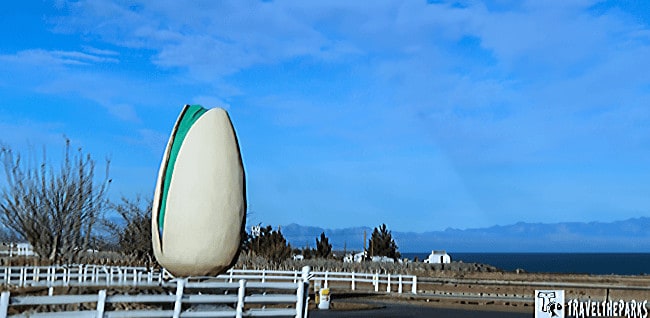
Heart of the Desert Pistachio Farm great place to visit! This little road side attraction was one of those surprises you encounter when travelling. What I initially thought would be a quick 10-minute stop turned into a full one-hour visit because there was so much to experience. We got to taste-tested a variety of farm-grown pistachios, and olive oils and did some wine-tasting. They also took us on an extensive behind-the-scenes tour of the property. There is an interesting film on the history of the property. I highly recommend indulging in the best pistachio ice cream I know I’ve ever had – a real blast.
New Mexico Museum of Space History – we slipped over to this museum with only about 2 hours left in the day but had a great time. Cool museum with a lot of exhibits. I can see this would be a fun place to take kids. Good outdoor displays too. We missed the IMAX films, but that would be something to add to our visit.

Where to Stay Near White Sands National Park: From Cozy Hotels to Starlit Campsites
There are several options for accommodations near White Sands National Park, depending on your preferences and budget. Whether you choose to camp in the park, stay in a nearby hotel, or rent a vacation home, be sure to book in advance, especially during peak season.
- Alamogordo: The city of Alamogordo is just stones throw outside the park. This town offers a variety of hotels and motels for visitors. This is a convenient option for those who prefer to stay in a larger town with more amenities.
- Camping: Oliver Lee Memorial State Park has tent and RV camping with picnic tables, grills, and restrooms. We stayed one night at this campground after visiting White Sands NP. The reservable sites were large and included a picnic shelter. Their bathrooms were clean and included hot showers. The park previously had backcountry camping, although it is currently closed for safety reasons.
- RV Parks: There are several RV parks to choose in close proximity to the park. The Alamogordo/White Sands KOA has RV camping with hookups and amenities.
- Vacation Rentals: There are several vacation rental options in the area, including cabins, apartments, and houses. We usually use Airbnb or Vrbo to reserve our accommodations.
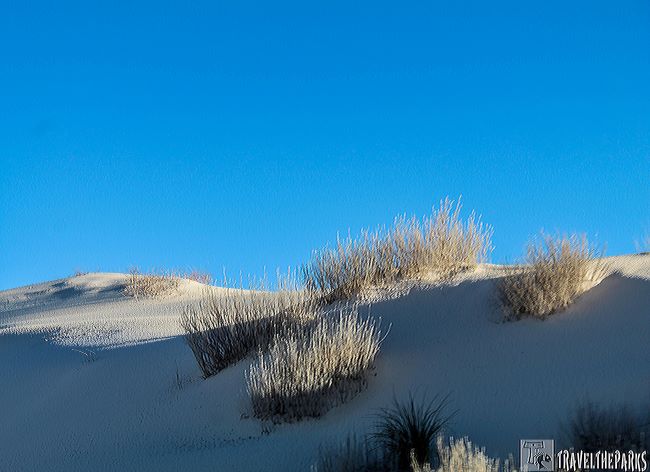
Final Thoughts: Visit Unforgettable White Sands: One of the Most Unique National Parks
As the sun dips low, casting long shadows across the landscape, we gather up our sleds heading back to the car. The dunes have been our playground, a thrilling rollercoaster ride of white. The dunes provide us with great joy as we careen down the slopes. An adrenaline pumping experience, to say the least. As the last the rays of golden light paint the dunes with warm hues, we head out of the park. We found our trip to White Sands National Park to be more than we ever expected. I highly suggest making a full day of White Sands National Park, as there is more to do than you first realize, and it is not a park to rush through.
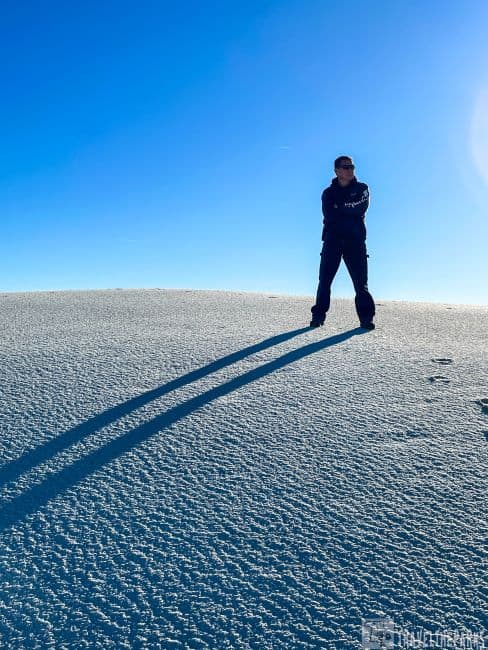
Our day at White Sands National Park ends, but the magic lingers. We drive back to our campsite, hearts full as the sun descends completely below the horizon. The soft glow of the Milky Way is our guide. We may brush the sand off our clothes, but the memories, like tiny grains, have forever etched themselves into our souls.
Have you been to White Sands National Park? What is your favorite hiking trail in the park? Please share your thoughts in the comments below.


